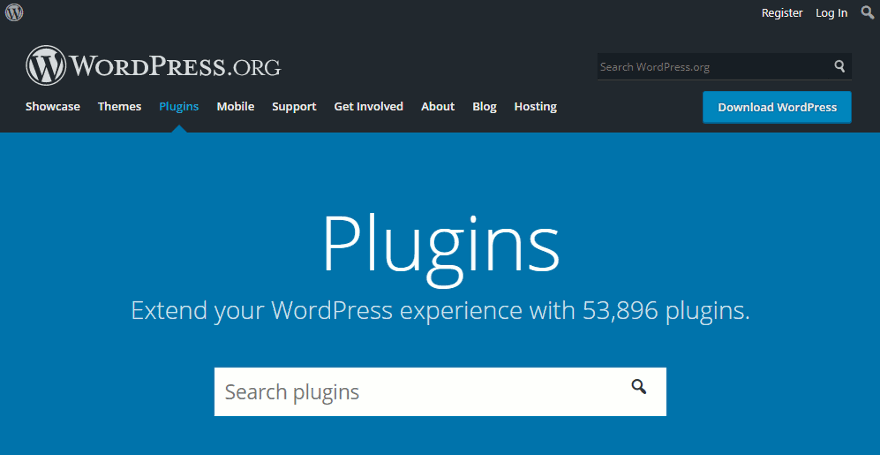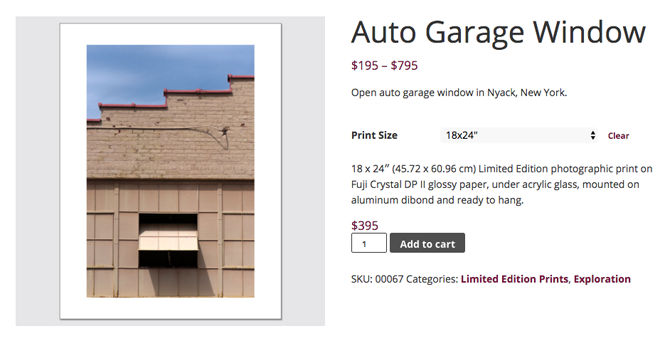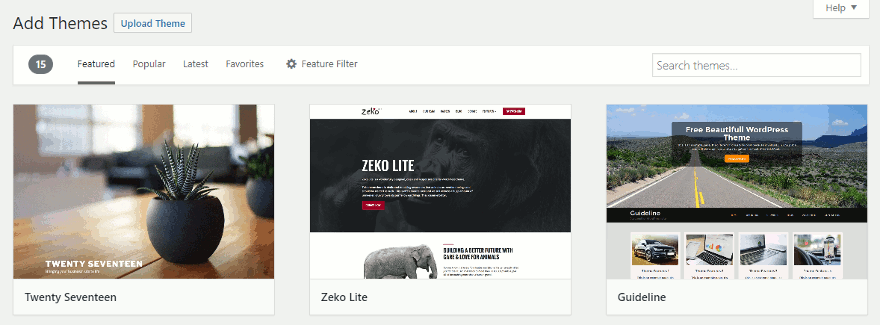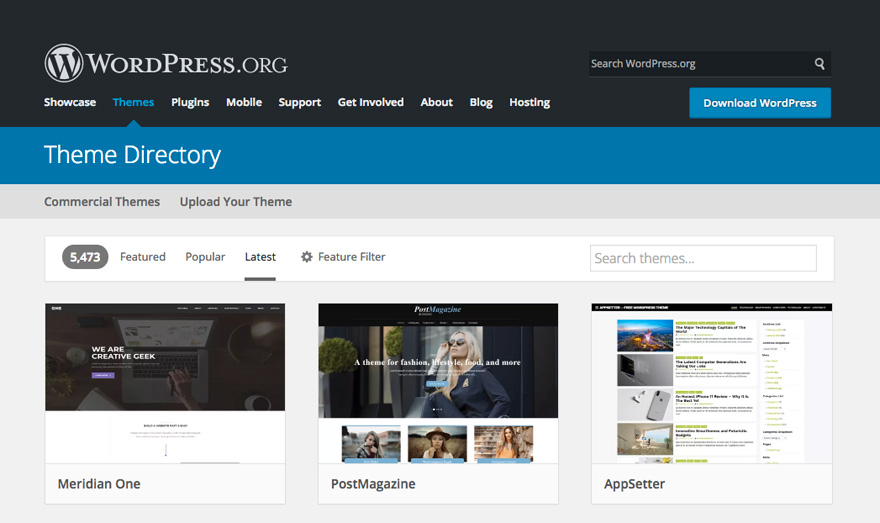When it comes to choosing a theme for your WordPress website, there are a ton of options to choose from. There are currently over 7,000 free themes in the WordPress directory, plus countless premium themes from various developers.
So, how do you choose the best theme for your site? In this post, I will go over 10 things you should consider when selecting a WordPress theme to use.
If you’re looking for quality shared hosting for your WordPress website, we highly recommend A2 Hosting. They offer unlimited SSD space, free automatic site backups, hosting optimized for speed and 24/7/365 guru technical support.
- Use caution when selecting a theme
- 1. Simpler is better
- 2. Your site must be responsive
- 3. Compatibility with essential plugins
- 4. Checking for browser compatibility
- 5. eCommerce-ready
- 6. Multilingual/translation-ready
- 7. SEO-friendly
- 8. User-friendly design
- 9. Is it updated frequently?
- 10. Check ratings and reviews
- Installing your chosen theme
- Conclusion
Use caution when selecting a theme

WordPress can be used to create virtually any kind of website, and there are themes which will work well for the type of site you have.
You want your theme to complement your site’s content. So, if you run a blog, it’s crucial you use a theme which helps to improve readability, and makes your content easy to digest.
Multipurpose themes – There are a number of so-called multipurpose themes, which are meant to be a “one-size-fits-all” solution. They claim to be the perfect choice for any kind of website, but are often the exact opposite – the worst option you can choose.
Generally speaking, you want to avoid multipurpose themes because they are full of customization options, most of which you will not end up using. All this extra junk tends to make them slow and bloated, with unnecessary code that will only hamper your site’s performance.
Many themes which look amazing are poorly-coded and full of extra garbage that will make your site sluggish and unprofessional. No one likes a website which loads slowly, and it can even cause Google to penalize you in search rankings.
While many multipurpose themes should be avoided, there are some which are fast and coded well.
Do some research – When choosing a theme, do some research and read reviews about it. Come up with a list of 5 themes you like, then narrow down your choices from there.
Your website theme is the face of your online business, and it plays an important role in how well visitors and search engines perceive it.
Do yourself a favor and choose a clean, professional theme which effectively conveys your business’s message.
Below, you will find steps you can take to ensure that you choose the best theme for your WordPress website.
1. Simpler is better

There are many WordPress themes with a wide array of color, layout and customization options, and some even have animated elements. It may seem like all these options help enhance your site… but you certainly don’t need them.
Search for a theme with a design that helps your business clearly and effectively convey its message. Ideally, you want your site to both look amazing and be easy to navigate for your visitors.
Choose a theme which is not too complicated. Web design’s main goal is to help users find information quickly and easily.
In addition to finding a great looking theme, you need one which has Calls-To-Actions (CTAs) designed to help your site grow. These can be built in to your theme, or added separately with the help of a plugin.
2. Your site must be responsive

In today’s day and age, your website MUST WORK well on ALL DEVICES.
People use their smartphones and tablets to browse the web, and if your site looks crappy and/or doesn’t function properly when viewed on either of them, you’ve got a problem on your hands. A large percentage of website traffic is from mobile devices, up to 50% or more in some cases.
The majority of WordPress themes are fully-responsive, and will look great on all devices, including desktop and laptop computers, tablets and smartphones.
Google penalizes sites which are not mobile-friendly, and has boosted its mobile-friendly algorithm a few times.
Make sure you give your website the best possible chance to show up in Google search results by making it fully-responsive.
Testing your site for responsiveness
The simplest way to test whether a theme is responsive or not is to resize your browser window. As you change its size, the theme layout should automatically adjust to fit each screen width.
You can take this a step further by copying the URL of the theme’s demo page, and pasting it in Google’s Mobile-Friendly Test tool.

No matter how mobile-friendly the theme is, this test is likely to show a few warnings. Make sure to be on the lookout for any red flags like text being too small or content being wider than the screen, among others.
Adding AMP to your website
If you’re looking to take your site’s mobile-friendliness to the next level, you may want to consider adding Accelerated Mobile Pages (AMP) to your site.
Accelerated Mobile Pages is an open-source initiative supported by both Google and Twitter. It relies on bare HTML and limited Javascript. All AMP content is hosted on Google’s AMP cache, then served to your visitors instantly when they click on your result in search engine results.
The goal of the Accelerated Mobile Pages project is to make web content load faster for mobile users. It is designed to work properly on every application, browser and web viewer.
3. Compatibility with essential plugins

One of the main advantages to using WordPress is the amount of amazing plugins you can use to add all kinds of functionality to your website. From SEO to speed, security and more, there is a plugin for pretty much anything you’d need on your site.
There are certain must-have plugins, which you should install with any website. These include Yoast SEO, W3 Total Cache (or another caching solution), Wordfence Security and BackWPup, among others.
You want to make sure that your theme is compatible with all of the widely-used plugins. In most cases, popular themes should be compatible with all the plugins you’d need, but ask the theme developers if you’re unsure.
4. Checking for browser compatibility

Your site visitors will use different browsers, so it’s important that your website looks and functions properly on all of them, including:
- Google Chrome
- Firefox
- Safari
- Internet Explorer
The majority of WordPress theme developers thoroughly test their themes using a variety of browser compatibility tools. They are likely to mention that their theme is compatible with all browsers in the theme details, but feel free to check for yourself.
You can run some basic theme compatibility tests for both mobile and desktop versions using any of the following online tools:
- BrowserStack (paid)
- Browsershots (free)
- Browserling (free and paid versions)
- Litmus (paid)
- IE NetRenderer (free and paid versions)
- Browser Sandbox (free)
- TestingBot (paid)
- BrowseEmAll (paid)
- Multibrowser (free and paid versions)
- CrossBrowserTesting (paid)
- Sauce Labs (free and paid versions)
Note: You can just run the theme demo page through any of the above-mentioned tools, as opposed to installing the theme and then running the test on your own site.
5. eCommerce-ready

Are you looking to sell digital or physical products on your site? If so, you should make sure that the theme you choose is compatible with WooCommerce, the leading eCommerce plugin for self-hosted WordPress sites.
While almost all themes should work with WooCommerce, some will inevitably be more suited for your online shop.
Mainly, you want to check out some theme demos to see how the shop, product and product category pages look using whichever theme you choose.
Alternatively, you may do the following to preview your eCommerce site:
- install the theme and WooCommerce plugin
- create a product
- take a look at the shop, individual product and product category pages to see what they look like
6. Multilingual/translation-ready

If you wish to have a WordPress site in multiple languages, or simply a language other than English, you want to make sure you choose a theme which is translation-ready.
In addition to choosing a theme with multilingual functionality built-in, there are plugins which can help you translate certain site elements as well. Loco Translate lets you quickly and easily translate a number of strings, as well as plugins and much more.
7. SEO-friendly

The WordPress theme you choose plays an important role in your website’s SEO-friendliness. Your site can look amazing, but be full of poorly-coded HTML which can have a negative effect on its performance in the search engines.
If you’re a beginner, it will be tough to analyze your theme’s source code by yourself to determine if it’s well-written. Premium WordPress developers often state that their themes are coded well and optimized for SEO.
You can check your theme’s HTML5 online with the W3C Markup Validation tool. It will likely show you some warnings about your site even if they’re totally irrelevant, but it’s a good tool for general checks.
8. User-friendly design

It’s imperative that your new theme be nicely designed and simple to navigate. Whatever you do, MAKE SURE that everything on your site is clear and can be easily found by your visitors.
Take a look at the theme’s demo, and try to analyze its design more closely.
You can ask yourself the following questions to help decide if it’s a good choice:
- Is the site easy to navigate?
- Is the content readable and easy to digest?
- Does the design fit your site or blog type?
Again, simplicity is your friend… so don’t complicate things by making your site fancier than it needs to be.
9. Is it updated frequently?

WordPress core is updated on a regular basis because of security upgrades, bug fixes and new features. It’s important to choose a theme which is also actively maintained, and updated on a regular basis. If a theme was last modified 2 or more years ago, you’re better off avoiding it.
10. Check ratings and reviews

When deciding on a theme, make sure you take a look at its ratings and reviews. For free WordPress themes, you will see ratings below the Preview and Download buttons. See how many ratings the theme has, and read through some of the reviews by clicking on the corresponding star amounts (1 star, 2 stars, etc.).
With premium themes sold on third-party marketplaces, you’ll also find customer reviews.
Please note: Some people will never be satisfied, no matter how awesome a theme is. Keep this in mind when reading bitter reviews written by miserable people who likely couldn’t figure out how to do something on their site.
Pretty much all WordPress themes receive at least a few bad reviews. If the number of 1 star reviews for a particular theme is really high, you should probably avoid using it.
Installing your chosen theme
Once you’ve chosen the perfect theme for your WordPress site, it’s time to install it.
First, go to Appearance > Themes, and click on the Add New button at the top.

This will take you to a new page, where you can browse WordPress themes and install them directly, or upload a theme you have already downloaded.

If you downloaded a theme, simply click the Upload Theme button at the top.

This will bring you to a theme upload box. Click the Choose File button and locate the zip file on your computer. Once you find it, click the Install Now button.
As soon as your theme has been uploaded successfully, you’ll see a success message and the following links:
- Live Preview
- Activate
- Return to Themes page
You can preview the theme to get a rough idea what it will look like on your site, or you can just go ahead and activate it.
Conclusion
Choosing a WordPress theme is a pretty straightforward process, but one which should be handled with care. Using a crappy theme can negatively affect your site and its design, performance and user-friendliness.
Hopefully this guide has provided you with insight you can use to choose the ideal WordPress theme for your website.
If you found this post helpful, please share it and spread the word!
Want more content like this? Sign up for my newsletter to receive helpful WordPress Tutorials, Tips and Tricks.




Nice! However I do not think that all multipurpose themes are rubbish. Some of them are pretty fast.
Hi Daniel,
You’re right, and I added a sentence saying that some of them are cleanly coded and fast. Thanks for stopping by, and I appreciate your input.